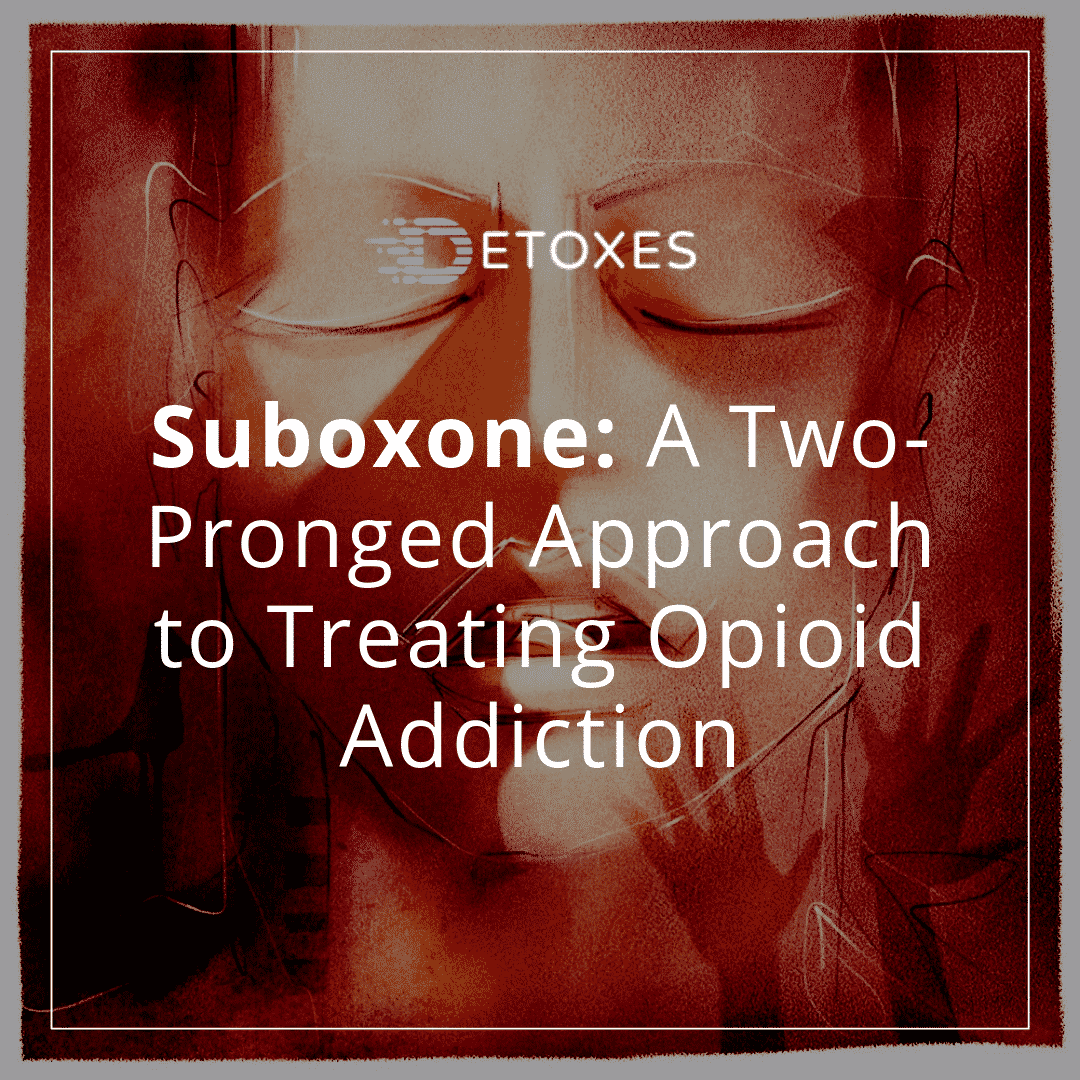Suboxone: A Two-Pronged Approach to Treating Opioid Addiction
Article Contents
The popular opioid treatment medication Suboxone is a mixture of two drugs; buprenorphine and naloxone4. Buprenorphine is an opioid drug whereas naloxone is an opioid antagonist. The combination of buprenorphine to naloxone is in a strategically formulated 4:1 ratio.
Suboxone was approved for use in the treatment of opioid dependence in 20023. It thus has a role in opioid detox programs. Under a doctor’s supervision, Suboxone is usually taken once daily via sublingual tablets; administered under the tongue or inside the cheek. The dosage can be adjusted based on clinical symptoms, and patients should be observed medically for at least 2 hours after the initial dose1.
How Long Does Suboxone Work at Opioid Receptors?
Compared to other opioids, buprenorphine has a relatively long half-life. Buprenorphine is a partial agonist at μ-opioid receptors and an antagonist at κ-opioid receptors. This may seem confusing and contradictory, but in short, it allows Suboxone to displace other opioids (e.g. heroin) from their shared receptors.
Naloxone is a competitive antagonist at opioid receptors, and effectively “blocks” the receptors from other opioids binding. Naloxone does not affect the absorption and pharmacokinetics of buprenorphine. Buprenorphine’s half-life (the time it takes for the liver and kidneys to metabolize and eliminate half of the drug) ranges from 24-60 hours, depending on the individual1.
The inclusion of naloxone aims to deter misuse. Naloxone, as previously mentioned, is an opioid antagonist, and so blocks the receptors in the brain that produce an opioid high. This makes Suboxone an unattractive choice for users who crave a quick fix because, if not taken whilst already abstinent, an opioid withdrawal will occur (secondary to blocked receptors now deprived of their usual opioid) rather than euphoria.
Because the onset and half-life of buprenorphine are longer than other street-drug opioids, withdrawal from buprenorphine doesn’t take effect for days. For this reason, Suboxone is effective in “weaning” opioid addiction and allowing a user to recover without debilitating withdrawal symptoms of that opioid.
Why Was it Developed?
Suboxone was developed as an alternative to methadone. Its primary advantage is that it carries less abuse potential than methadone, and has a low potential for overdose1. That is not to say, however, that there is absolutely no risk whatsoever for misuse to occur.
It was found that misuse of buprenorphine (and Suboxone) is primarily found in individuals already dependent on opioids and that their primary desire is to self-treat their opioid dependence and withdrawal; not necessarily to “get high” off the medicine. It thus cannot be stressed enough that anyone seeking help for their opioid addiction should get in contact with a doctor or detox center today to discuss their options2.
References
- Ducharme, S., Fraser, R., & Gill, K. (2012). Update on the clinical use of buprenorphine: in opioid-related disorders. Canadian Family Physician, 58(1), 37-41.
- Schuman-Olivier, Z., Albanese, M., Nelson, S.E., Roland, L., Puopolo, F., Klinker, L., & Shaffer, H.J. (2010). Self-treatment: Illicit buprenorphine use by opioid-dependent treatment seekers. J Subst Abuse Treat, 39(1):41–50.
- Substance Abuse and Mental Health Services Administration, Center for Behavioral Health Statistics and Quality. (2013). The DAWN Report: Emergency Department Visits Involving Buprenorphine. Rockville, MD.
- Velander, J.R. (2018). Suboxone: rationale, science, misconceptions. Spring, 18(1): 23–29.




